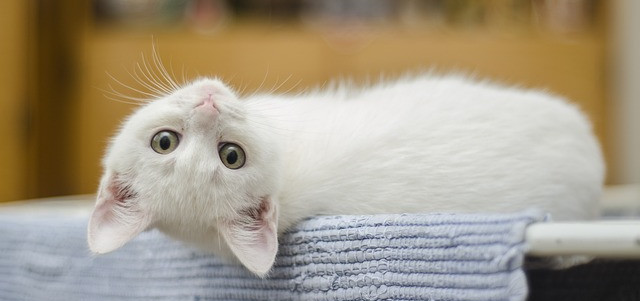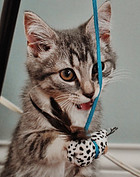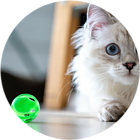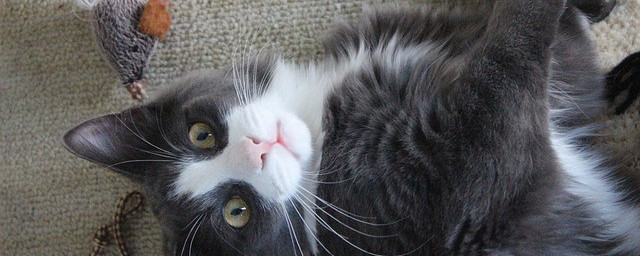
Cats are curious, agile, and playful animals. They need mental and physical stimulation to stay happy and healthy. Toys play a crucial role in providing this stimulation, especially for indoor cats. With a wide variety of toys available in the market, choosing the right ones for your feline friend can be a bit overwhelming. In this article, we will guide you through the process of selecting the perfect toys for your cat’s needs and preferences.
Understanding Your Cat’s Preferences
Before embarking on a shopping spree for cat toys, it’s important to understand your cat’s preferences and habits. Each cat has unique personality traits, and what might be appealing to one cat may not interest another. Observing your cat’s behavior and learning their preferences will help you select toys that they will truly enjoy
Types of Cat Toys to Consider
1. Interactive Toys
Interactive toys are designed to engage your cat’s hunting instincts. They often mimic the movements of prey and require your cat to chase, pounce, and “capture” the toy. These toys provide mental and physical stimulation and can help prevent boredom and destructive behavior. Some examples of interactive toys include:
- Feather wands or teaser toys: These toys feature feathers attached to a wand or string, which you can move around to simulate the movement of prey. Cats love to chase and pounce on these toys.
- Laser pointers: A simple laser pointer can provide endless entertainment for your cat. Use the laser to create a moving dot on the floor or walls, and watch your cat try to catch it. However, it’s important to never shine the laser directly into your cat’s eyes.
2. Puzzle Toys
Puzzle toys are designed to challenge your cat’s problem-solving skills and provide mental stimulation. These toys typically require your cat to figure out how to access treats or toys hidden inside. Puzzle toys can help keep your cat entertained when you’re not available to play. Consider the following puzzle toys:
- Treat-dispensing toys: These toys have compartments or openings that dispense treats when your cat interacts with them. They encourage your cat to use their paws or nose to manipulate the toy and are great for keeping them occupied.
- Food puzzles: Food puzzles require your cat to work for their meal by using their paws or mouth to extract kibble from the puzzle. They can help slow down fast eaters and provide mental stimulation.
3. Plush Toys
Plush toys are soft, cuddly toys that cats can bat around, bite, and carry. These toys can provide comfort and companionship for your cat, especially when they are alone. Look for plush toys that are durable and safe for your cat to chew on. Avoid toys with small parts that can be swallowed.
4. Catnip Toys
Catnip toys are infused with catnip, a herb that many cats find irresistible. These toys can provide hours of entertainment and stimulate your cat’s hunting instincts. However, not all cats are affected by catnip, so it’s important to observe your cat’s reaction before investing in a catnip toy.
5. Scratching Posts
Scratching is a natural behavior for cats that helps them stretch, exercise, and maintain healthy claws. Providing a scratching post or board is essential to prevent your cat from damaging furniture or carpets. Scratching posts come in various shapes and sizes, including vertical posts, horizontal boards, and combination towers. Choose a scratching post that is sturdy and covered with sisal or a similar material.
6. Balls and Chasing Toys
Balls and chasing toys are classic options for stimulating your cat’s hunting instincts. These toys can be rolled, thrown, or batted around, providing exercise and mental stimulation. Consider the following options:
- Lightweight balls: Cats love to chase and bat lightweight balls. Opt for balls that are small enough for your cat to carry and made of safe materials.
- Motorized toys: Some cats enjoy the excitement of chasing motorized toys. These toys move on their own, mimicking the movement of prey.
7. DIY Toys
You don’t always need to purchase expensive toys for your cat. Cats are known to enjoy playing with simple household items. Consider the following DIY toy ideas:
- Cardboard boxes: Cats love exploring and hiding in cardboard boxes. Cut holes in the box to create a fun maze or obstacle course for your cat. You can also hide treats or toys inside the box to stimulate their natural hunting instincts.
- Paper bags: Unravel a paper bag and let your cat play with it. The rustling sound and texture will likely entertain them for hours. Just make sure to remove any handles or strings that could pose a choking hazard.
- Crumpled paper balls: Crumple up a piece of paper into a ball and let your cat bat it around. This simple toy can provide hours of entertainment.
Safety Considerations
While toys are essential for your cat’s well-being, it’s crucial to prioritize their safety. Here are some safety considerations to keep in mind:
- Avoid small parts: Choose toys that don’t have small parts that can be easily swallowed or choked on.
- Monitor playtime: Supervise your cat during playtime, especially with toys that have strings or other potential hazards. Remove any toys that show signs of damage or wear.
- Use safe materials: Ensure that the toys you select are made from non-toxic materials and do not have any sharp edges or points.
- Avoid strings and yarn: Cats love to play with strings and yarn, but these can be dangerous if swallowed. Keep them out of reach and opt for safer alternatives.
How to Play with Your Cat
Playing with your cat is not only enjoyable for both of you but also provides valuable exercise and mental stimulation. Here are some tips for interactive play:
- Choose an appropriate environment: Find a quiet area where your cat can focus on playtime without distractions.
- Use a variety of toys: Rotate between different types of toys to keep your cat engaged and prevent boredom.
- Engage your cat’s natural instincts: Mimic the movements of prey by dragging a wand toy or bouncing a ball. Encourage your cat to chase, pounce, and swat at the toy.
- Allow your cat to “catch” the toy: Letting your cat “win” and catch the toy occasionally will keep them motivated and satisfied.
- Provide rewards: Use treats or praise as rewards during and after play sessions to reinforce positive behavior.
Remember to tailor the play session to your cat’s energy level and preferences. Some cats may prefer short, intense play sessions, while others may enjoy longer, more relaxed sessions.
Conclusion
Selecting the right toys for your cat is essential for their overall well-being. By understanding your cat’s preferences, considering their natural instincts, and prioritizing safety, you can provide them with engaging and enriching playtime. Remember to play with your cat regularly, monitor their toys for damage, and consult your veterinarian for additional guidance. With the right toys, you can keep your feline friend entertained, mentally stimulated, and happy for years to come.